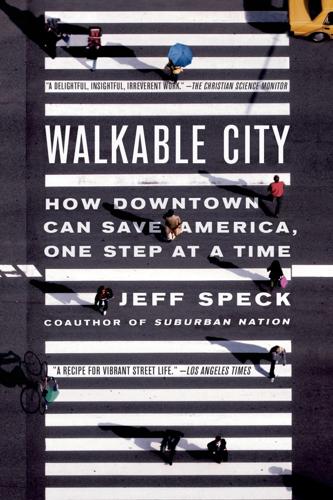
Walkable City: How Downtown Can Save America, One Step at a Time
by
Jeff Speck
Published 13 Nov 2012
Despite all the countervailing pressures, it is fully within the capabilities of the typical American city to alter its relationship to the automobile in subtle ways that can have a tremendous impact on walkability—to welcome cars, but on its own terms. First and foremost, this means making all transportation decisions in light of the phenomenon of induced demand. BECAUSE I MUST: INDUCED DEMAND About once a month, I give a talk somewhere in America, typically to a chamber of commerce, a planning association, or a bunch of people in a bookstore. Topics and approaches can vary, but I have one hard-and-fast rule: every lecture, no matter what, I will talk at length about induced demand. I do this because induced demand is the great intellectual black hole in city planning, the one professional certainty that everyone thoughtful seems to acknowledge, yet almost no one is willing to act upon.
…
This would be acceptable if efforts to reduce traffic congestion didn’t wreck cities and perhaps also if they worked. But they don’t work, because of induced demand. Most city engineers don’t understand induced demand. They might say that they do, but, if so, they don’t act upon that understanding. I say this because it would seem that almost no traffic engineers in America possess the necessary combination of insight and political will that would allow them to take the induced demand discussion to its logical conclusion, which is this: Stop doing traffic studies. Stop trying to improve flow. Stop spending people’s tax dollars giving them false hope that you can cure congestion, while mutilating their cities in the process.
…
But guess who gets the big contract for the roadway expansion that the study deems necessary? As long as engineers are in charge of traffic studies, they will predict the need for engineering. Finally, and most essentially: The main problem with traffic studies is that they almost never consider the phenomenon of induced demand. Induced demand is the name for what happens when increasing the supply of roadways lowers the time cost of driving, causing more people to drive and obliterating any reductions in congestion. We talked about this phenomenon at length in Suburban Nation in 2000, and the seminal text, The Elephant in the Bedroom: Automobile Dependence and Denial, was published by Hart and Spivak in 1993.
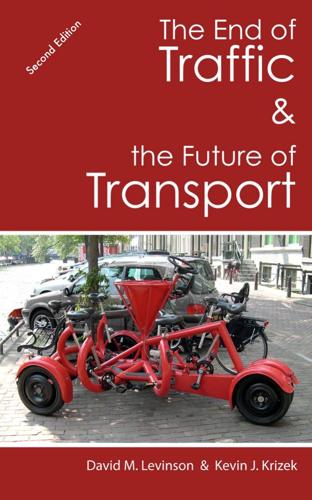
The End of Traffic and the Future of Transport: Second Edition
by
David Levinson
and
Kevin Krizek
Published 17 Aug 2015
See the Journal of Transport and Land Use for the latest research in the field, or Planning for Place and Plexus (Levinson and Krizek 2008) for a textbook explanation. 22 While the "Iron Law of Congestion" (induced demand) implies that supply creates its own demand, this is true only to a point, while demand is growing faster than supply can accommodate it. If demand is not supply constrained, as in many rural areas where roads are well below capacity, there is no induced demand. If demand is falling for other reasons, even if supply is rising, induced demand stumbles. And once maturity has set in and all the low-hanging fruit (high benefit, low cost projects) have been picked, the net cost of projects rises, fewer and fewer roads get built. 23 Figure 1.1.
…
To spoil the ending, she places the responsibility of one man's death not on a single individual, but rather, on the shoulders of many. Many writers attribute the changes to per capita travel demand to declining employment and rising fuel prices. Further the lack of roadway expansion proportionate to population limits the amount of "induced demand" that may have driven travel growth earlier. They certainly are part of the package, but cannot explain everything. Like Christie, we charge several culprits who have cumulatively contribute to the crime of "killing", or at least maiming, traffic. Changing Demographics Both Kevin and David are Generation X (born 1964-1983)46—a group that has not radically affected aggregate transport behavior.
…
If you can work while traveling, the value of saving time is less than if you must focus on the driving task. This phenomenon helps explain a premium commuters are willing to pay for high-quality transit and intercity rail service.249 If the time or money cost of traveling per trip declines, the long-held theory of induced demand predicts, all else equal: more trips, longer trips, and more trips in the peak period. Logically, if the time or money cost per trip rises, there should be fewer and shorter trips, or reduced demand. Privately owned autonomous vehicles lower the cost of travel per trip. MaaS eliminates the fixed cost of transportation, and exchanges it for a higher per cost trip.
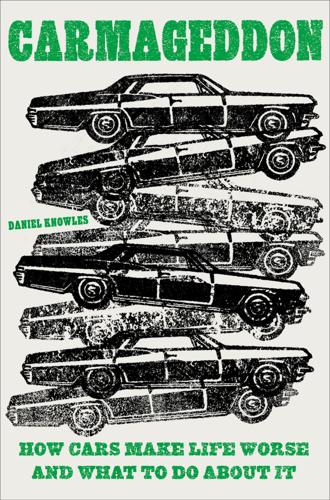
Carmageddon: How Cars Make Life Worse and What to Do About It
by
Daniel Knowles
Published 27 Mar 2023
That, however, was based on other studies that looked at whole highway networks (in this case, of the United States and the Netherlands), rather than specifically urban roads. It makes sense that induced demand is less likely to be a problem in rural areas, where everyone drives anyway, and cannot switch to taking a subway train instead. In urban areas, other estimates put the figure as high as 40 percent after six months and 100 percent after four years. That is, over four years, the entire extra capacity generated by a road expansion is used up again. Even the Department for Transport study found that “induced demand is likely to be higher for capacity improvements in urban areas or on highly congested routes.” Induced demand is not inherently a bad thing, obviously.
…
Transport policy explicitly followed a model of “predict and provide”: Planners would try to predict how many people would want to drive, based on past trends, and extrapolate out to decide how many roads to build. What the planners of the 1950s and ’60s had not understood, or refused to understand, was the principle of induced demand (more on this later). In economic terms, they had not understood that the number of drivers was “endogenous”—not “exogenous.” That is, the policy of “predict and provide” actually helped accelerate the rise of the car in the first place. If you build more roads, and do all you can to speed the flow of traffic, then the main result is that car ownership becomes more attractive.
…
In that case we Americans will hardly need to ponder a mystery that has troubled men for millennia. What is the purpose of life? For us, the answer will be clear, established and for all practical purposes indisputable: The purpose of life is to produce and consume automobiles.” Long before planners realized it, Jacobs had realized the problem of “induced demand” that roads create. This is also known in effect as Jevons paradox. That is, if you make something more abundant, the price of it will fall, and people will use it much more than they previously did. William Stanley Jevons was an English economist in the nineteenth century who looked at coal.
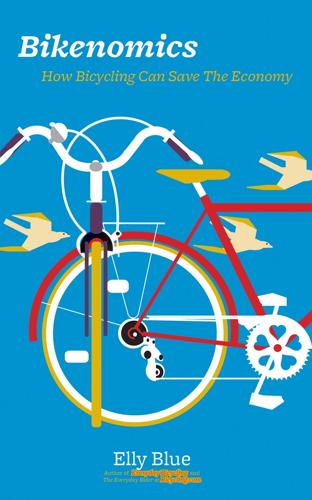
Bikenomics: How Bicycling Can Save the Economy (Bicycle)
by
Elly Blue
Published 29 Nov 2014
It’s a classic example of the tragedy of the commons—when everybody wants to use something, it becomes less useful for everyone. If we were talking about a popular Christmas toy instead, we might predict rioting—and that assessment is not far off the daily reality of and general discourse about our roadways. The term for this phenomenon is “induced demand.” By building a road and inviting the world to use it freely, we are in essence managing the demand for the road in a way that maximizes congestion. More effective demand management strategies exist, like congestion pricing—reducing demand by charging market rates for the use of a road. Congestion pricing has not yet come to the United States, though.
…
But the strategy is working in London, Stockholm, Milan, and Singapore, to keep city streets moving during peak hours. There are other ways to affect demand as well. People in cities all over the world are happy to use a well-run transit system, if it is available, or to ride bicycles if the option is attractive, or a combination of the two. Induced demand also works for bicycling in the same way as it does for cars. When you build bike paths and lanes, or design streets more subtly to be attractive places to bike, people drag their dusty bikes out of the garage and ride. When it comes to bicycling, short trips, close to home, are the lowest-hanging fruit.
…
The current federal transportation bill explicitly offers clean air funds to pay for road widening projects that can show reduced congestion—no matter how faulty the long-term assumptions. But even the short-term congestion relief—a few minutes each day—doesn’t fix pollution. When people can drive faster, they drive farther.73 Induced demand means that if a road does its job as a development tool, the long term impact of pollution—both on that road and on surface streets that it feeds into—goes up astronomically.81 These short-term reprieves amount to expensive long-term investments in much greater air quality problems, as the freeway projects of the past have demonstrated.
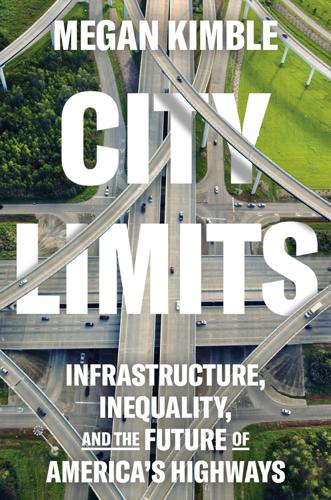
City Limits: Infrastructure, Inequality, and the Future of America's Highways
by
Megan Kimble
Published 2 Apr 2024
“By connecting groups fighting against expansions and groups advocating for reconnecting communities and seeing that their goals were pretty much the same, there were numbers there. Those numbers said, this is a movement.” The group started meeting monthly, hashing out strategy and sharing updates from across the country. They talked about traffic modeling and the NEPA process, shared studies on air pollution and induced demand, reviewed federal legislation and lobbying efforts. As Congress hammered out the final details of the Infrastructure Investment and Jobs Act, the Freeway Fighters Network sent a letter to leaders in the House and Senate. “On behalf of a nationwide coalition of campaigns seeking to reimagine freeway corridors in American cities, we, the undersigned 96 organizations, call on our leaders in Congress to support the proposed Reconnecting Communities program,” it began.
…
“Many people support it because they say the traffic is bad and they want to fix traffic,” Elda says. “But if you expand the highway, it will just fill up with more cars. And if there are more cars on the highway, there will be more pollution.” The man nods. He, too, understands the phenomenon of induced demand. “They are going to displace other people. We don’t know where we’re going to go. Home prices are so high,” Elda says. The man pulls up the survey on his phone. He thanks Elda and Jesus for stopping by. “Good luck,” he says. Meanwhile, a block north on Red Ripple Road, Molly knocks on the door of a low-slung redbrick house.
…
In May 2015, Jay summarized his findings in a four-hundred-word article that he posted on the website for Houston Tomorrow. The story spread across the state, and then the country, and then the world. Soon, the Katy Freeway expansion had become the most famous example of the phenomenon known as induced demand: If you make it easier for people to drive, more people will drive. Culberson’s amendment remained in the appropriations bill. Jay eventually moved back to Austin with his wife. He had an idea to take what he was doing at Houston Tomorrow—advocating for sustainable growth—and scale it statewide.

Road to Nowhere: What Silicon Valley Gets Wrong About the Future of Transportation
by
Paris Marx
Published 4 Jul 2022
The company tried to distract from how pathetic their final product was by emphasizing plans for a larger system to go all the way to the airport, but there was really no hiding the fact that, once again, Musk had over-promised and vastly underdelivered. In December 2019, Musk tweeted a poll asking his followers whether he should build “super safe, Earthquake-proof tunnels under cities to solve traffic,” but one user replied with a link to a Wikipedia article on induced demand and asked him to read it. In response, Musk, who has no training in transport planning, dismissed the concept, writing, “Induced demand is one of the most irrational theories I’ve ever heard. Correlation is not causation. If the transport system exceeds public travel needs, there will be very little traffic. I support anything that improves traffic, as this negatively affects almost everyone.”
…
In 2011, economists Gilles Duranton and Matthew Turner published a study that compared the amount of new roads and highways built in US cities to the amount of new miles of driving that took place between 1983 and 2003.5 They found a causal relationship between the two that they called “the fundamental law of road congestion”: when the amount of highways or roads in a city increased, the amount of driving tended to increase by a proportional amount on highways and a slightly lower amount on major urban roads. So, as new road capacity was made available, people were incentivized to drive more, including by moving farther from the urban core and making longer commutes. In transport planning, this concept has another name: induced demand. The decision to move from seeing the roads as a public space where city officials chose which means of travel to incentivize in service of maximizing the public good to one that responded to perceived transport demand set the stage for the expansion of automobile use. As more space was made for cars on existing streets, new roads built for them, and eventually freeway systems that cemented their supremacy, each of those actions was not just responding to demand but inducing greater demand for automobiles and places to drive them.
…
I support anything that improves traffic, as this negatively affects almost everyone.” Yet Musk’s efforts were putting more cars on the road and proposing narrow tunnels that would not solve the problem. It was therefore not surprising to read that he was dismissive of induced demand and wanted to preserve suburban community planning. When pitching the Boring Company’s transport system, Musk made a particularly illuminating argument about how it would fit within existing neighborhoods. In 2018, he explained that: you can weave the Boring system tunnel network into the fabric of the city without changing the character of the city. The city will still feel the same; you’re not going to get in anyone’s way; you’re not going to obstruct anyone’s view … You will have this revolutionary transport system and your city will still feel like your city.15 The language Musk used mirrors the concerns of a particular type of anti-development organization that has gained notable leverage and attention in California and is typically made up of white, financially stable homeowners who do not wish to see denser housing built near their homes.

Age of the City: Why Our Future Will Be Won or Lost Together
by
Ian Goldin
and
Tom Lee-Devlin
Published 21 Jun 2023
Just imagine the kind of public transit systems we could have built if all the money we spent on cars and roads in the twentieth century had been pooled into shared modes of transport. The irony is that the convenience provided by cars is self-eroding. As people become reliant on driving for a growing share of journeys, the amount of traffic congestion increases. New roads help to ease that congestion for a time, but quickly lead to what urban planners call induced demand, as faster journey times encourage people to drive even more. It takes just a few years for the typical metropolitan highway to fill up with increased demand.6 What cars have brought is privacy and choice. They have made it possible for the majority of urban populations in rich countries to move out to the suburbs, where they can live in large homes in quiet cul-de-sacs with their own backyards.
…
Chapter 10 – Conclusion: Better Together 1 Mumford, The City in History, p. 3. 2 UN Department of Economic and Social Affairs, Population Division, 2022, ‘World population prospects’ (population.un.org). 3 OECD, 2015, The Metropolitan Century (oecd.org). 4 Hess, D. and Rehler, J., 2021, ‘America has eight parking spaces for every car. Here’s how cities are rethinking that land’, Fast Company. 5 Morris, D., 2016, ‘Today’s cars are parked 95% of the time’, Fortune. 6 Schneider, B., 2018, ‘CityLab University: induced demand’, Bloomberg News. 7 Jacobs, J., 1961, The Death and Life of Great American Cities (Random House). 8 Rushton, D., 2020, ‘London vs New York: which city has the higher average building height?’, Carto (carto.com). 9 Montgomery, C., 2013, The Happy City (Penguin Books). 10 OECD Data, 2021, ‘Net ODA’ (data.oecd.org). 11 Goldin and Muggah, Terra Incognita, p. 133. 12 Thatcher Archive, Interview for Woman’s Own, 23 September 1987, Margaret Thatcher Foundation (margaretthatcher.org).
…
Sample, I., 2007, ‘Drug-resistant form of plague identified’, Guardian. Sanchez-Paramo, C., et al., 2021, ‘COVID-19 leaves a legacy of rising poverty and widening inequality’, World Bank (worldbank.org). Sanghani, N., 2019, ‘Lessons from the history of globalisation’, Capital Economics (capitaleconomics.com). Schneider, B., 2018, ‘CityLab University: induced demand’, Bloomberg News. Schwedel, A., et al., 2021, ‘The working future: more human, not less’, Bain & Company (bain.com). Semuels, A., 2017, ‘Japan might be what equality in education looks like’, The Atlantic. Shapiro, S., 2015, ‘New species of city discovered: university city’, Next City. Shelter, 2022, ‘The story of social housing’ (england.shelter.org.uk)
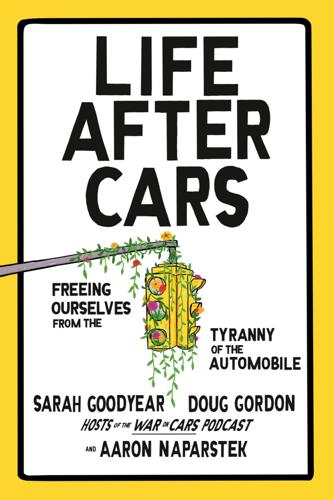
Life After Cars: Freeing Ourselves From the Tyranny of the Automobile
by
Sarah Goodyear
,
Doug Gordon
and
Aaron Naparstek
Published 21 Oct 2025
Janno Lieber, the chair and CEO of New York’s Metropolitan Transportation Authority, was quoted by The New York Times on the occasion of the book’s fiftieth anniversary as saying that “anybody who shares Moses’s view that mass transit is the past and not the future will be proven wrong.” One of the things that was apparent even in Moses’s time was something called “induced demand”—a remarkably consistent phenomenon in which building more lanes on a road attracts more users, so that congestion never really goes away. It’s a pattern that was crystal clear in 1936, after the completion of the Grand Central, Interborough, and Laurelton Parkways on Long Island. When the roads opened, writes Caro, “one editorial opined that the new parkways would, by relieving the traffic load…solve the problem of access to Moses’ Long Island parks ‘for generations.’ ” As it was, “the new parkways solved the problem for about three weeks.”
…
GO TO NOTE REFERENCE IN TEXT During peak travel hours: Mike Lindblom, “It’s Worse Than You Think: Everett Leads the Nation in Traffic Congestion, Report Says,” Seattle Times, February 5, 2018, seattletimes.com/seattle-news/transportation/its-worse-than-you-think-everett-leads-the-nation-in-traffic-congestion-report-says. GO TO NOTE REFERENCE IN TEXT Janno Lieber, the chair: Emma G. Fitzsimmons, “The Power Broker at 50,” New York Times, September 3, 2024, nytimes.com/2024/09/03/nyregion/the-power-broker-at-50.html. GO TO NOTE REFERENCE IN TEXT something called “induced demand”: Robert A. Caro, The Power Broker: Robert Moses and the Fall of New York (Vintage Books, 1975), 515. GO TO NOTE REFERENCE IN TEXT The Inflation Reduction Act of 2022: Ashley Stimpson, “Will the Inflation Reduction Act Finally Tear Down Baltimore’s Highway to Nowhere?,” Next City, October 5, 2022, nextcity.org/urbanist-news/inflation-reduction-act-baltimore-highway-to-nowhere-removal.
…
See car dependency Helvoirt, NL, 64 Henry Ford Museum of American Innovation, 17–18 Heritage Foundation, 130 Herzfeld, Baruch, 230 Heyer, Heather, 131 Hidalgo, Anne, 192, 193–94, 195 High Cost of Free Parking (Shoup), 162–63 highways construction of, 19 expansion of, 20–21, 105, 226 Interstate Highway System, 172–77 reducing impact of, 194–95 removal of, 112, 175–76 repair of, 203 revolts against, 19–20 through Emeryville, CA, 196 Hispanic Americans, 144 historic sites and buildings, 180, 194 history of cars car resistance, 23–25 early, 7–13 pedestrians and jaywalking, 16–17 questioning love affair with, 21–23 rise of motordom, 13–15 war with cars, 17–21 Hitler, Adolf, 128, 129 Hobbes, Michael, 39–40 Hoboken, New Jersey, 112 Hochul, Kathy, 131 Hollister, David, 45 hope, 25, 225–26, 231, 233 See also action ideas; resistance to cars Hopkins, Katie, 131 housing, affordable, 165, 167, 229 Houston, TX, 176 Hume, David, 125 I illness. See health impunity of drivers, 7, 23–24, 152 independence, 54–56, 59–60, 65–66, 68–69 individualism, 101–2 Indonesia, 78 induced demand, 175 See also car dependency; highways; traffic congestion inequity in access to walking, 136 car dependency perpetuating, 137–41, 145–46, 153–54, 226 grind of, 135 health, from air pollution, 102–3 of highway construction, 176–77 lack of independence, 54–56, 59–60, 65–66, 68–69 parking and, 166 in urban design, 148–49 Inflation Reduction Act of 2022, 176 infrastructure built environment as, 66–67, 68 changing culture, 42–43 cheap and reversible, 185, 189, 208–13 curb cuts, 158–60 designing for nondrivers, 160–62 designing to keep cars, 183–84 in Emeryville, CA, 195–98 gender and, 149–52 highways, 172–77 implementation of changes to, 187 importance of, 157 lack of safety of, 145–46 limiting mobility of Black Americans, 146 supportive of kids, 66–68 for walking and biking, 107, 134–35, 170–72, 171, 180, 181–82, 190, 192, 195 See also bike lanes; safety injuries, 98, 106, 113–14 See also safety; traffic fatalities International Energy Agency, 218 intersectional identities, 149 Interstate Highway System I-5, 173 I-35, 20, 176 I-81, 19 I-90, 78 I-94, 20–21 I-95, 203 Is-Ought fallacy, 125 J Jacobs, Jane, 20, 23 Japan, 91–92, 106–7, 168–72 jaywalking term, 16 Jim Crow segregation, 138, 139 See also Black Americans; racism Jordan, Tony, 167 K Kaba, Mariame, 25 Kakutani, Michiko, 72 Kenney, Sean, 65, 67 Kent, Clark, 3–5 Khan, Sadiq, 112–13 Kia, 88 Killed by a Traffic Engineer (Marshall), 230 killed or seriously injured (KSI), 12 See also traffic fatalities Kimble, Megan, 105, 106, 176, 177 Klein, Ezra, 38 Krugman, Paul, 38 Kurmann, Anita, 206 L L.A.

Street Smart: The Rise of Cities and the Fall of Cars
by
Samuel I. Schwartz
Published 17 Aug 2015
Or how, two years later, twenty-five thousand more people were getting into Manhattan’s Central Business District. What made this interesting is that it was a nearly perfect example of what the economist Anthony Downs named the Law of Peak-Hour Expressway Congestion and which another economist, Gilles Duranton, called induced demand. Boiled down to the basics, induced demand is what happens when the supply of a good increases and more of that supply then gets consumed: when a host puts out more cheese and crackers, her guests eat more cheese and crackers. What this means in road (and bridge, and tunnel) building is not just obvious but as well documented as anything in transportation engineering: “If you build it, they will come.”
…
In 1960, when the United States had 64.6 million full-time workers, 9.4 million, or 14.5 percent of them, worked outside the county in which they lived; by 2000, 128.3 million were employed, and 34.3 million worked outside their home counties: 27 percent. Average commuting times inched up to more than fifty minutes a day. Because of induced demand, there was no engineering fix to this problem: no matter how many roads we built, or how well, people weren’t getting from point A to point B any faster, partly because points A and B were getting further apart, partly because we had reached the limits of what could be done to improve automotive speed and safety even using the limited definitions of an earlier era of engineering doctrine.
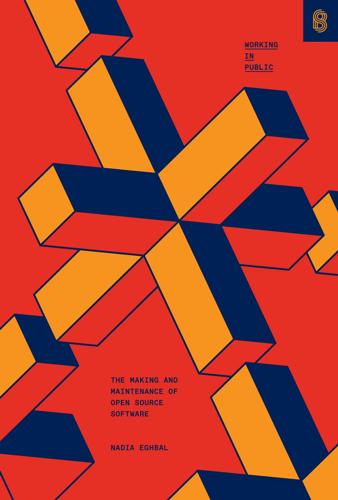
Working in Public: The Making and Maintenance of Open Source Software
by
Nadia Eghbal
Published 3 Aug 2020
Every comment added to a discussion thread is ultimately a form of debt, and its [sic] a form of debt with compound interest. . . . . No matter how many GitHub issues we create, it seems that every single one will grow in length until it becomes an unsustainable conversation. We have a problem of induced demand: just as adding lanes to a highway does not resolve traffic congestion, creating more threads does not resolve comment congestion.272 The threat of induced demand explains why the solution to managing extractive contributions is not always to add more contributors—tempting as that may be—but to draw clearer boundaries between which types of tasks are worth allocating anyone’s attention to and which can be safely ignored.
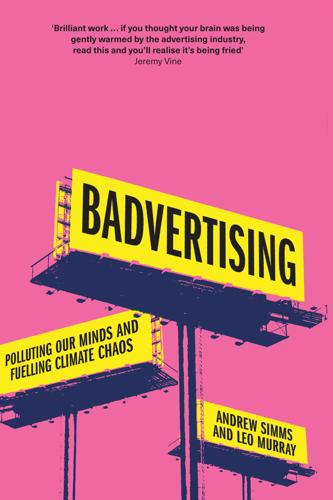
Badvertising
by
Andrew Simms
German critics at the time wrote about the paradox of their autobahn system taking people out to nature.27 A visit by British transport planners to see Hitler’s autobahns in 1937 shaped the whole UK approach in the years to come.28 It is not an exaggeration to say that the Nazis were a key inspiration for the building of the UK’s motorway network and by extension, the wholesale motorisation of British society by policymakers. What these (and subsequent generations of) planners failed to grasp was that these extra concrete spaces would simply encourage more people to buy and use cars, and to fill them up in turn. Today, the iron law of ‘induced demand’ is a well-established transport planning principle; every 1 per cent increase in road network capacity will lead to a 1 per cent increase in traffic volumes, as surely as night follows day. This still hasn’t stopped transport authorities from trying to build their way out of congestion though; the ‘common sense’ perspective of ‘not enough road’ devised by US car marketers in the 1930s and 1940s still has too powerful a grip on the collective policy psyche.
…
Ford Fiesta, SUVs Carbon Offsetting and Reduction Scheme for International Aviation (CORSIA) 144 carbon offsets 102−4, 142−4 Carmichael Coal Mine, Australia 166 Carnegie Mellon University, Decision Sciences Department 52 Carter, Jimmy 111 CCTV (closed circuit television) 36 Champions for Earth initiative 101 Channel One (US tv programme) 39−40 Chelsea FC 98 Chesterfield cigarettes 57, 63 Chevrolet Blazer cars 113, 118 Chevron Airline 155 children 8−9, 15, 17, 33, 39, 74 China 40 Cho, J.H. 46 Cho, Su Myat 48 chocolate cigarettes 63 cigarette advertising bans on 63, 71−82 bans on television advertising 56−7, 59 campaigns against 56−7, 185−7 cigarette coupons 63 cigarette smoking 31, 54−82 depiction in films 25, 48−9 and nicotine 77 substitutes for 64 Cipollone family: case against tobacco industry by 70 Citroen cars 129 Civil Aeronautics Board (US) 149 Civil Rights Act (US 1964) 148 Clarke, Kenneth 68, 72 Clean Development Mechanism (CDM) 142, 143 Clear Channel Outdoor Company 10 Clement-Jones, Lord Tim 78, 80 climate change 5, 15−16, 41, 83, 94−5, 101 Climate Change Act (2008) 151 Climate Change Committee 138, 151 Climeworks Company 143 Coca-Cola Company 22, 23 Code of Broadcast Advertising (BCAP) 158 Code of Non-Broadcast Advertising and Direct and Promotional Marketing (CAP) 158 colour 20−2 Columbus, Christopher 57 Committee on Public Information (CPI) 30 Competition and Markets Authority (CMA) 154−5, 157, 159, 178 Conservative government (Major) 72 (Thatcher) 65, 69 Conservative Party conference 22 consumer credit 3, 43−4 Consumer Federation of America 35 consumer neuroscience 52−3 consumer psychology 53, 121 consumerism 2−9, 44 Convention on International Civil Aviation 149 cookies 34 third-party cookies 36 Coolidge, Calvin 188 COP26 Conference 97, 165 Council for Tobacco Research (US) 61 Covid-19 pandemic 48, 91, 109, 125−6, 182, 193−4 impact on airline industry 152, 154 Cowling, Keith 45 Craigie, Jill 54−5 cricket 69, 84 Cruise, Tom 25 Culture Declares Emergency (group) 100 Culture Unstained (organisation) 99 Curtis, Adam 30 cycling 87−8, 89 Daedalus (myth) 135 Daily Mail 198 Daily Mile fitness programme 88 Daily Telegraph 198 Dawson, John 54, 66, 67 Dennison, Mary-Ann 148 Department of Health and Social Security (DHSS) 67, 72 Dobson, Frank 76 Doctors for Tobacco Law (organisation) 71 Dodge Durango cars 119 Dodge Ram trucks 114 Doll, Richard 55−6, 58 Doria, João 8 Dorrell, Stephen 73 Douglas-Home, Sir Alec 59 Dreiser, Theodore A Hoosier Holiday 115−6 Drope, Jeffrey 74 drought 94 DuckDuckGo (search engine) 196 e-fuels 137−8 Earth Overshoot Day 3−4 Easyjet Airline 150−1, 154, 163−4 advertisement 163ill slogan 13 Easyjet Future Flying programme 163−4 eavesdropping devices 36 Ecclestone, Bernie 76 Eddington, Paul 69 Edell, Marc 70 Edinburgh International Festival 195 Eisenhower, Dwight D. 109 electric vehicles 92, 129−30, 131 Emirates Airline 84−5, 96 slogan of 134 energy drinks 19 Ennals, David 64 Eshel, Gidon 46 Etihad Airline 155 European Advertising Standards Alliance (EASA) 167 European Commission 103 European Court of Justice 76 European Economic Community: dispute with US 111 European Parliament 104 European Union 79 Clean Claims Directive 155 Empowering Consumers for the Green Transition 155 Evangelical Environmental Network 129 Evening Standard 151 Exxon Valdez oil spill 128 ExxonMobil 77 Facebook 27, 32, 33 content moderators for 33 facial expressions 22 Febiac Federation 173 Federal Communications Commission (FCC) 24 Federal Trade Commission (FTC) 33−4, 49 Fédération Internationale de l’Automobile (FIA) 77 Fédération Internationale de Football Association (FIFA) 98, 102, 103 Ferrari Formula 1 cars 24 Fiat Chrysler Company 129 films: depiction of smoking in 25, 48−9 Financial Conduct Authority 178 Financial Times 75 fingerprinting 35, 36 Finland 93, 190 ban on tobacco advertising in 65, 75 Finnair airline 63 FIRES research programme 138 Fletcher, Charles 58−9 floods 94 food advertising: use of colour in 21 Foot, Michael 54−5, 58, 59−60, 67, 69 Forbes (magazine) 11 Ford, Bill 118 Ford, Edsell II: 112 Ford Explorer cars 112, 113, 117, 118, 124, 128 Ford Fiesta cars 107 Ford Model T cars 110, 118 Ford Motor Company: No Boundaries campaign 117−8 FOREST (campaign group) 62 Forest Green Rovers FC 104 Formula One racing 76, 77, 88 fossil fuels 77, 80−1, 97−8, 99−105 Foxley-Norris, Sir Christopher 62 fracking 88−9 France 173, 198 Jury de Déontologie Publicitaire 173 Résistance à l’Aggression (tv network) 11, 189 smoking ban in 79 Freiburg FC 104 Freud, Sigmund 29, 30 Frick, Vivian 51 Gahagan, Fritz 54 Galbraith, John Kenneth 160 The Affluent Society 16 The Great Crash 157 Gazprom Company 84, 97−9 football sponsorship by 98−9 General Motors Company 95−6 Geneva 193 George, Susan 192 Germany 11, 189 Deutsche Umwelthilfe (NGO) 11 Nazi era 30, 58, 116 smoking ban in 79 Werbefrei (organisation) 11, 189 Gillett, Lizzie xii Glantz, Stanton 49 Goebbels, Joseph 30 Global Financial Crisis (2008) 151 Global Footprint Network 3−4 Google 26, 27, 32 Gore, Al 24 graffiti art 7−8 Grahame, Kenneth The Wind in the Willows 116 Greenberg, Bradley 39−40 Greenpeace 99, 140, 172 greenwashing 85, 103, 155 Greenwood, Tony x Grenoble 194 Guardian 11, 144, 161 Gulf War (1990−91) 113 Gunster, Shane 123−4 Haarlem 189 Harris, Ralph, Baron of High Cross 62 Hauer, Ezra 121−2 Havard, John 66, 67 health campaigns 6, 60 Health Education Council 63, 68, 69 Red Book 68 Health Security Agency 131 Hidalgo, Anne 83, 102 High, Hugh 73−4 Hill, Austin Bradford 58 Hillary, Sir Edmund 127 Hind, Dan The Return of the Public 199, 200 Honda cars 120 House of Lords 176 Environment Committee 180 HSBC 71, 158, 165−7 advertisement 165ill Hubbard, Diane 125 Hühne, Matthias Airline Visual Identity 149 Hum Vee cars 113 Hummer cars 113, 114, 118, 126−7 hybrid vehicles 92 mild hybrid vehicles 130 Icarus (myth) 134ill, 135 Imperial Airways 146 advertisement 145ill Imperial Oil Company 81 ‘Review of Environmental Protection Activities for 1978-79’ 80 Impossible Hamster (film) xii India 194 Indian Premier League 94 induced demand 117 Ineos Company 84, 87−91, 97−8 Ineos Grenadiers cycling team 87, 89−90 Ineos Team UK 87, 105 Ineos Upstream Ltd 88 Infiniti QX4 cars 123 Inflation Reduction Act (US 2022) 5 Institute of Economic Affairs (IEA) 73, 75 internal combustion engine (ICE) 4−5, 92, 96 International Air Transport Association (IATA) 85−6, 142, 152 International Civil Aviation Organization 135, 144 Icarus mural 134ill International Energy Agency 138 International Olympic Committee (IOC) 93 International Ski and Snowboard Federation (FIS) 101 International Travel Association 142 Iran 194 Iraq war 151, 199 Ireland: smoking ban in 79 Jacobi, Derek 69 James I, King Counterblaste to Tobacco 57 Japanese car market 93, 114 Jardine Glanville Company 66 J.C.
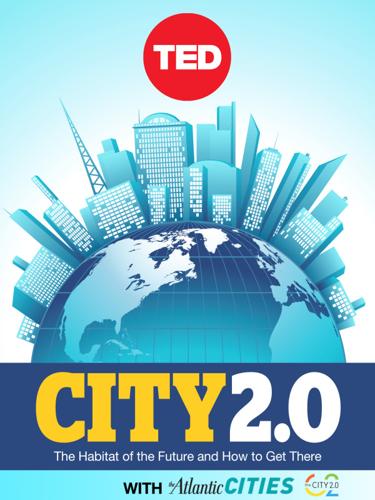
City 2.0: The Habitat of the Future and How to Get There
by
Ted Books
Published 20 Feb 2013
Many drivers switched to faster roads in New Jersey, and as New York City invested more in public transportation, some commuters switched their daily patterns to ride subways and buses (New York is the only city in the country where fewer than half of all households own a car). Traffic is one of the best-known examples of induced demand; the more roads, the more people will use them. If the ultimate goal is to curb driving in a city and to move people away from unsustainable transportation sources, reducing the space allotted to cars is a good way to start. Naysayers will tell you that these urban highway removal projects were exceptional cases in which a confluence of natural disasters, strong-willed politicians, or other unique factors allowed for the removal.
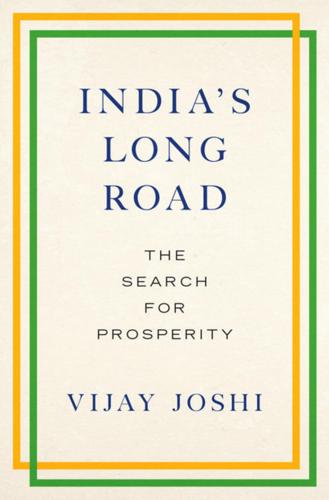
India's Long Road
by
Vijay Joshi
Published 21 Feb 2017
So the case for state intervention is not decisive. (There remains, however, one plausible source of market failure in primary care. This arises from the fact that patients are ill-informed in medical matters. Doctors know much more about medicine than patients, so there is a potential for supplier-induced demand: patients may be inveigled into buying unnecessary, and possibly even harmful, treatment.)38 There is of course an equity case for subsidizing primary care for poor people. But this is an argument for public finance, not necessarily for public provision. Whether public provision is a good thing depends on the quality of public provision.
…
On the demand side, patients much prefer going to fee-charging, private, often unqualified doctors, who treat patients with much more consideration and courtesy than government doctors, and make up in effort what they lack in qualifications. But they also offer antibiotic and steroid treatments for ordinary, often self-limiting, conditions. There is surely an element of supplier-induced demand in this; unfortunately, it appears now to have E d u c at i o n a n d H e a lt h C a r e [ 195 ] 196 become ingrained in consumer preferences. People do not feel they are being properly cared for unless they are prescribed antibiotics. Given this dismal scenario, what are the policy implications for primary care?
…
[ 303 ] 304 have to contract or close down. I see no realistic hope of improving the abysmal quality of care in the public sector without competition. Of course, the system I envisage would need state regulation. Though market failures are not pervasive in primary care, they are certainly not absent. Supplier- induced demand undoubtedly exists. For example, patients may be cajoled or even deceived by private doctors into taking antibiotics they do not need. (There are some similar horror stories in secondary care as well, for example of women being ‘persuaded’ to have unnecessary hysterectomies.) So, regulation is inescapable, combined with programmes to train unqualified private doctors, and measures to curb the open availability of prescription drugs and medicines across the counter.
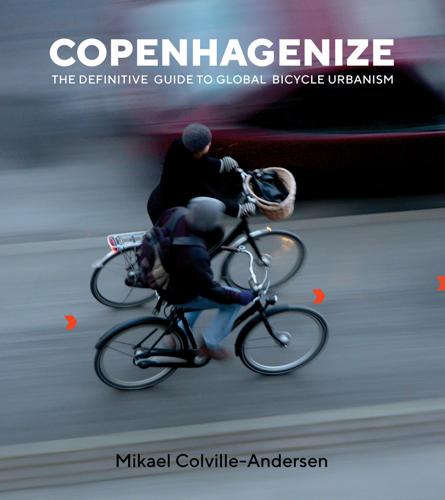
Copenhagenize: The Definitive Guide to Global Bicycle Urbanism
by
Mikael Colville-Andersen
Published 28 Mar 2018
Every city has at least 25 percent of the population who will take to the “wheel,” as it once was called, if infrastructure and traffic-calming are implemented. Two million private bicycles have been sold in Paris since the city’s bike-share system, Vélib’, hit the streets in 2007. This is positive induced demand. If you don’t see anyone swimming, does that mean you don’t need a bridge? I love the statistic that 67 percent of motorists in Copenhagen want more bicycle infrastructure. Why? Because we’ve shown them and they get it. They can do the math visually. If a motorist is sitting at a red light with five cars in front of them and 100 cyclists at the red light on the cycle track next to them, they can see it.
…
There were few Danes or Dutch being invited to conferences to talk about their work. There were no publishers emailing people like me to write books about bicycle urbanism. The work was done quietly in municipal offices, without much fanfare or external attention. As user rates on the expanding infrastructure started to rise, the induced demand led to a further expansion of the network and the extent of infrastructure. Nowadays, bold political goals are laid out in our performance-based culture in order to keep people interested and get politicians elected or reelected. Any other city on the planet could replicate the success of Copenhagen or Amsterdam in 40 years, absolutely.

Streetfight: Handbook for an Urban Revolution
by
Janette Sadik-Khan
Published 8 Mar 2016
Urban designer Jeff Speck, who has seen this assumption play out on the streets of hundreds of cities and towns, says it’s the mark of “the fundamental intellectual bankruptcy of traffic engineering as a profession and its unwillingness to acknowledge that environment influences behavior.” “And that plays out both in terms of traffic and in terms of safety,” he told me. “In traffic it’s induced demand, the idea that you add a lane to absorb traffic without acknowledging that that lane will cause traffic.” After building an eight-lane highway in a major urban area, a city almost invariably finds itself with eight lanes of slow-moving traffic soon thereafter. When, in an effort to ease that traffic, the eight-lane road is expanded by 25 percent to ten lanes, the city will eventually have ten lanes of traffic and nearly 25 percent more traffic, not 25 percent less.
…
Boulevard, 220 Diarrassouba traffic fatality, 207–8 Harlem River, 145 Harris, Patti, 228 Hasidim, and Kent Avenue bike lane, 162, 163 Hazen, Don, 12 Helmets, bike, 150, 190–91, 222–24 Helsinki, “Mobility as a Service,” 287–88 Hendy, Peter, 35 Henry Street, 258 Herald Square, 85, 92–94, 100–101 Heyward, Leon, 123 Hidalgo, Anne, 70 High Line, 20, 83, 292, 294 Highway lane widths, 49–51, 54 Highway system, 15, 16, 28, 183 Highway Trust Fund, 27 Hindy, Steve, 230 Holland Tunnel, 44 Hollywood, 69–70 Homicides gun, 209 in Medellín, 110 Horticultural Society, 125 Housing costs and density, 25–26 Houston, Texas population, 36 urban planning, 36 Houston Street, 11 Hudson River Greenway, 230 Hudson Street bike lane, 21, 21–22 Hurricane Sandy, 189–90, 278–80 Hylan Boulevard, 268 I Iconic streets, 3. See also specific streets “Induced” demand, 62–63 Infrastructure, 265–80 bridges, 266–67, 267, 271–72 crisis in America, 266–67, 269 lighting, 272–73 parking, 273–77 paving asphalt, 267, 269–71 Staten Island, 267–69, 271 trucking, 277–78 Institute of Transportation Development Policy (ITDP), 276–77 Institute of Transportation Engineers, 30 Intersections model street, 49–50, 50 rearranging complex model street, 59, 60, 61 rearranging model street, 52–53, 54, 55–56 traffic signals and signs, 12, 38–39 Interstate 405 (California), 47–48, 62, 65 Interstate Highway, 15, 16, 28, 183 Interstate Highway Act of 1956, 16 Iraq war, 208–9 Istanbul, Taksim Square, 3 J Jackson, Kenneth, 18 Jacobs, Jane, 8–10, 11, 18–19, 20–21 battle between Robert Moses and, 9–10, 12, 18 on street life, 9–10, 11, 19, 20–21 Jane’s Lane (Hudson Street), 21, 21–22 Jardín Circunvalar, 115 Jarvis Avenue, 147–48 “Jaywalking,” 65 Jay-Z, 118–19 Jersey barriers, 140, 142 Jewel Avenue, traffic fatalities, 220 Johannesburg, 117 Johnson, Boris, 70 Jubilee Year 2016, 283 K Kayden, Jerold, xvi Kelly, Mary Beth, 230 Kelly, Ray, 156–57, 174 Kent Avenue bike lane, 144, 162–64 Kerouac, Jack, 273 Koch, Ed, 12, 14, 152–53 L LaHood, Ray, 31, 219 Lander, Brad, 172 “Latent” demand, 62–63 La Vorgna, Marc, 174 LED lighting, 272 Legible London, 129, 132 Leguizamo, John, 219 Lerner, Jaime, 234 Lighting, 272–73 Lincoln Center, 15 Lincoln Tunnel, 44, 242 Litman, Todd, 28 Little Italy, 75 Lombard Street, 3 London bike lanes, 70 bike lane sabotage attacks, 146 bike share, 191, 192 congestion pricing, 42 street map signs, 129, 132 sustainability plans, 35 Trafalgar Square, 3 London 2012 Summer Olympics, 35 London Plan, 35 London School of Economics, 28 Long Island Railroad, 240 Look!
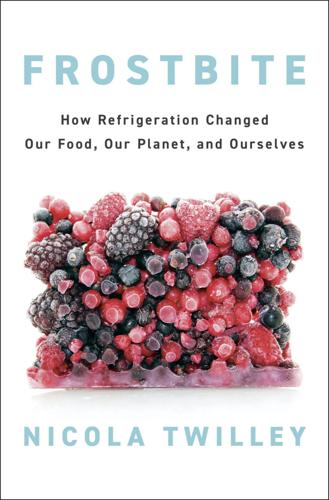
Frostbite: How Refrigeration Changed Our Food, Our Planet, and Ourselves
by
Nicola Twilley
Published 24 Jun 2024
* * * — The basic mechanism behind the domestic refrigerator hasn’t changed much since the triumph of the electric fridge in the 1930s, and as Kipp Bradford assured me, it’s simple enough to be extremely sturdy. This presents something of a challenge to manufacturers. In 1932, advertising executive Earnest Elmo Calkins wrote the introduction to a book outlining a concept he called “consumer engineering,” which relied on a combination of planned obsolescence and effective design to induce demand. “Goods fall into two classes: those that we use, such as motor cars or safety razors, and those that we use up, such as toothpaste or soda biscuits,” he wrote. “Consumer engineering must see to it that we use up the kind of goods we now merely use. Why would you want last year’s hand bag when this year’s hand bag is so much more attractive?”
…
This combination of bulk buying, aspirational purchases, and pride in maintaining an amply provisioned home has helped fuel the expansion of the average American fridge—a trend that shows no signs of slowing. “Customers will typically describe capacity as the number one thing that they want,” agreed Beko’s Justin Reinke. “But here’s the thing: if you go out and ask somebody if they want more money, their answer is going to be, ‘Yes, of course I want more money.’ ” It’s the theory of induced demand: just as adding another lane to a freeway will only increase congestion, extra fridge space will inevitably be filled. More is never enough. The real problem with huge, overstuffed fridges is that there’s almost no way the average family can consume that much food before it goes bad. What’s more, as geographer Tara Garnett explained, there is a “safety net” syndrome associated with refrigerated storage.
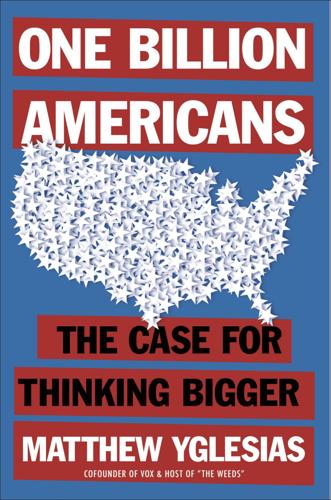
One Billion Americans: The Case for Thinking Bigger
by
Matthew Yglesias
Published 14 Sep 2020
Fundamentally, however, America needs to get back to basics on both roads and trains in terms of understanding what we’re trying to accomplish. What new stuff is for To most drivers annoyed by traffic jams, the intuitive answer is to build more or wider highways. The contemporary left tends to critique this notion by invoking the concept of induced demand. The way this works is that the congested state of a highway is a good reason not to drive on it. If you widen the highway and it gets more congested, that encourages more people to live on the farther-out portions of the route, and soon enough the new lanes are filled. This is true as far as it goes, but it also applies to trains.
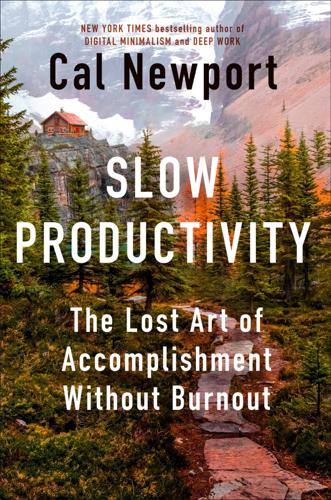
Slow Productivity: The Lost Art of Accomplishment Without Burnout
by
Cal Newport
Published 5 Mar 2024
Because the laundry basket is embedded in a thick, stress-inducing matrix of under-attended household tasks, it creates what the neuroscientist Daniel Levitin describes as “a traffic jam of neural nodes trying to get through to consciousness.” In this context, work tumbles forward as one stress-inducing demand among many. This is why Benchley retreated to the furnace factory and McCullough to his garden shed. They sought a more advantageous mental space to produce meaningful work. By calming their relational-memory system, they could slow their perception of time and allow their attention to mold itself more completely around a singular pursuit.
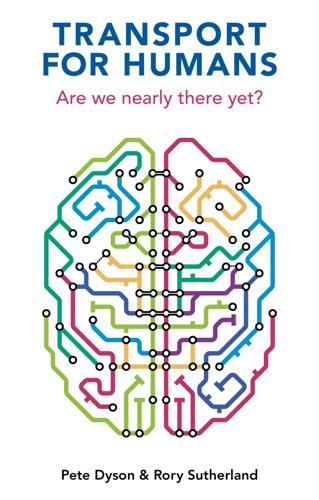
Transport for Humans: Are We Nearly There Yet?
by
Pete Dyson
and
Rory Sutherland
Published 15 Jan 2021
A detailed reaction to the absence of seatback tables is documented in R. Mansfield. 2016. How can you design a train with so many mistakes? Blog post, 29 July (https://bit.ly/3yesNWh). 2* Planners are also vulnerable to counter-intuitive effects. It might seem like adding lanes should ease congestion, but in fact that extra space induces demand (often from local traffic) that quickly fills the space. The result: the jams return, but even larger than before. This goes beyond human choice. The effect was predicted computationally by German mathematician Dietrich Braess in 1968 for electrical circuits and biological systems. More is not always faster. 3 R.
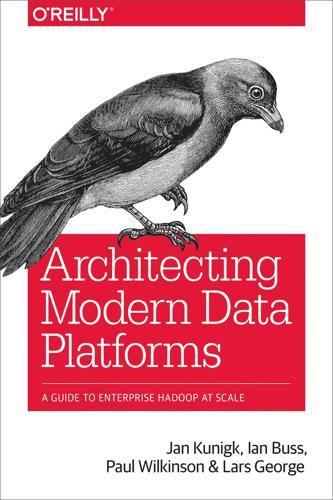
Architecting Modern Data Platforms: A Guide to Enterprise Hadoop at Scale
by
Jan Kunigk
,
Ian Buss
,
Paul Wilkinson
and
Lars George
Published 8 Jan 2019
In addition, many organizations have a backlog of potential workloads that are suppressed by the inability of their existing systems to handle them. After a highly flexible and scalable modern platform is introduced, that latent demand finds an outlet. After cluster capacity becomes available, new workloads arrive to exploit it. In economic theory, this effect is known as induced demand. Implementing Cluster Growth Modern data platforms, such as Spark and Hadoop, may have horizontal scalability as a core architectural principle, but adding nodes can still be challenging. In many enterprises, the procurement and installation of cluster servers requires the effective cooperation of multiple teams, which may include purchasing, datacenter operations, networking, and system administration—before we even consider platform software installation and configuration.
…
rack-mount form factors, Server Form Factors sequential I/O performance for disks, Sequential I/O performance-Sequential I/O performance identity and access management (IAM), Assessing the Riskcredentials, using in Amazon S3, Amazon Simple Storage Service frameworks offered by vendors, Identity and Access Management policies in GCP Cloud Storage, GCP Cloud Storage identity management providers, Identity management providersActive Directory (AD), Microsoft Azure integration in automated provisioning in the cloud, Integrating with a Kerberos KDC integration with, Integration with Identity Management Providers-Summarycertificate management, Certificate Management-Automation integration areas, Integration Areas integration providers, Integration Providers integration scenarios, Integration Scenarios-Scenario 3: Running a Spark Job Kerberos integration, Kerberos Integration-Corporate KDC LDAP integration, LDAP Integration-SSSD options for Hadoop, Identity Provider Options for Hadoop-Option C: On-Premises ID Servicescloud-only self-contained ID services, Option A: Cloud-Only Self-Contained ID Services cloud-only shared ID services, Option B: Cloud-Only Shared ID Services on-premises ID services, Option C: On-Premises ID Services provided by Microsoft, Microsoft Azure Impala, The role of the x86 architectureauthorization in, Impala edge node interactions with, Impala high availability, Impala-Deployment considerationsarchitecting for, Architecting for HA catalog server, Catalog server deployment considerations, Deployment considerations Impala daemons, Impala daemons statestore, Statestore overview, Apache Impala query sessions in Hue, Hue resources for continued reading, Going deeper short-circuit and zero-copy reads, Short-Circuit and Zero-Copy Reads tools for running benchmark tests, Validating Other Components use of Kudu through Impala's SQL interface, Kudu using for scan-heavy workloads, Instances impersonation, Impersonationin Hive, using Sentry, Hive in Oozie interactions with other Hadoop components, Oozie use by Hue with Hadoop services, Hue in-cloud key persistence, Options for Encryption in the Cloud, Recommendations and Summary for Cloud Encryption in-cloud key persistence with local key creation (BYOK), Options for Encryption in the Cloud, Recommendations and Summary for Cloud Encryption in-flight encryption, In-Flight Encryption-Authenticationenabling, Enabling in-Flight Encryption in the cloud, Encrypting Data in Flight in the Cloud SASL quality of protection, SASL Quality of Protection TLS encryption, TLS Encryption in-rack cooling devices, Cooling in-row cooling devices, Cooling induced demand, The Drivers of Cluster Growth InfiniBand (IB), Layer 1 Recommendations information architecture (IA), Many Distributed Systems infrastructure as a service (IaaS), Database Integration Optionsand PaaS Hadoop, Hadoop Distributions automated provisioning of clusters, Automated Provisioning VMWare, VMware and Pivotal Cloud Foundry infrastructure as code (IaC), Automated Provisioning infrastructure layers (datacenter), affecting Hadoop, Basic Datacenter Concepts ingestion, Ingestionand intercluster connectivity in datacenters, Ingest and Intercluster Connectivity-Hardwarehardware, Hardware software, Software ingestion proof of concept, Sizing Kudu by storage Oozie, Apache Oozie sizing clusters by ingest rate, Sizing by Ingest Rate streaming ingestion services, Landing Zones using integration framework to transfer data from landing zones, Landing Zones initiator (iSCSI), SANs installationchoices for Hadoop distributions, Installation Choices-Installation Choices process for Hadoop platform, Installation Process-Summary instance storage, Compute availability, Encryption in AWS instances, Compute Virtualization, Compute availabilityavailability in public cloud solutions, Instance availability AWS instance types, AWS instance types choosing for public cloud cluster implementations, Instancescomparison of instances, Instances cloud-provided images, security of, Assessing the Risk configuration for long-lived clusters, Instance configuration egress bandwidth per instance in GCP, Network Architecture instance (ephemeral) storage in AWS EC2, AWS storage options instance types in Azure, Azure instance types instance types in GCP GCE, Instance types network performance per instance type in Azure, Network Architecture network throughput per type in AWS, Network Architecture provisioning for long-lived clusters, Instance provisioning roles in Amazon EC2, Instance roles instruction set extensions (x86), The role of the x86 architecture integration frameworks, Landing Zones Intel ISA library, Write performance Intel's SR-IOV capabilities, Instances Intel-based server processors, The role of the x86 architecture Intelligent Platform Management Interface (IPMI), Operating Systemsexample implementations, Operating Systems inter-processor links, Commodity Servers, CPU Specifications inter-rack throughput, Throughput under load interaction patterns (users and cluster services), Interaction Patterns internet gateways, Network Architecture intra-rack throughput, Throughput under load inverted indexes, Apache Solr IP addressesresolution of hostnames to, preferring DNS over /etc/hosts, Layer 3 Recommendations static allocation in Layer 3, Layer 3 Recommendations using IPv4 instead of IPv6, Layer 3 Recommendations using private address ranges in Layer 3, Layer 3 Recommendations virtual IP, Virtual IP iperf3 tool, measuring network throughput, Measuring throughput-Throughput under load IPv6, disabling on Hadoop cluster machines, OS Configuration for Hadoop Ironic component (OpenStack Sahara), Life Cycle and Storage ISA-L coder, Write performance iSCSI, SANsCeph cluster running iSCSI gateways, Remote block storage isolationin do it yourself private cloud solution, Isolation in OpenShift private cloud solutions, Isolation in OpenStack, Isolation in private cloud solutions, Solutions for Private Clouds J Java, Web UIscoder, Write performance encryption types, Kerberos Clients Kerberos integration, Kerberos Clients keytool utility, Converting Certificates librados library in Ceph, Ceph storage systems and, Everything Is Java TLS and, TLS and Java x86 processor architecture and, The role of the x86 architecture Java Authentication and Authorization Service (JAAS), Kerberos over HTTP Java Generic Security Service (JGSS), Kerberos over HTTP Java KeyStore (JKS), TLS and Java, Converting Certificatesgenerating from P12 certificate, Converting Certificates JBOD (just a bunch of disks), Storage Controllers JDBC (Java Database Connectivity), Programmatic Accessuse in Hive, Hive JMeter, Validating Other Components JournalNodes, HA configurationsdedicated disks for, Deployment recommendations roles and interactions, Quorum Journal Manager mode JSONAPI messages in GCS, Storage options bucket policies in Amazon S3, Amazon Simple Storage Service returned by Cloudera Manager API, Cloudera Manager service account credentials in GCP, Service account jumbo frames, Layer 2 Recommendations, OS Configuration for Hadoop, Measuring throughput jump servers, Administration Gateways Jupyter Notebook, Web UIs JupyterHub, Notebooks just a bunch of disks (JBOD), Storage Controllers, Optimized Server Configurations JVMs (Java Virtual Machines), Why is NUMA important for big data?
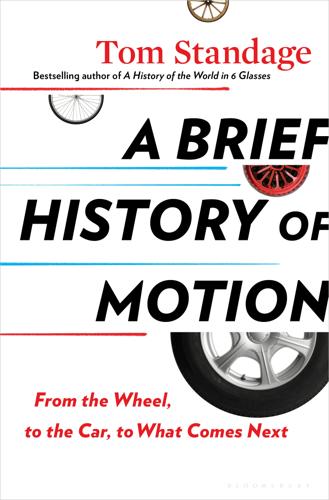
A Brief History of Motion: From the Wheel, to the Car, to What Comes Next
by
Tom Standage
Published 16 Aug 2021
Similar revolts followed elsewhere. In some cases, as in Baltimore and Washington, D.C., they were led by alliances between Black and white community groups who opposed freeway construction. America’s highway-construction boom came to an end in the 1970s, as opposition mounted and the notion of “induced demand”—the realization that new road capacity attracts more cars—became more widely known and accepted, under the mantra “you can’t build your way out of congestion.” Moreover, the long-held assumption that commuting patterns were from suburb to city center and back again was no longer true as American cities spread out.
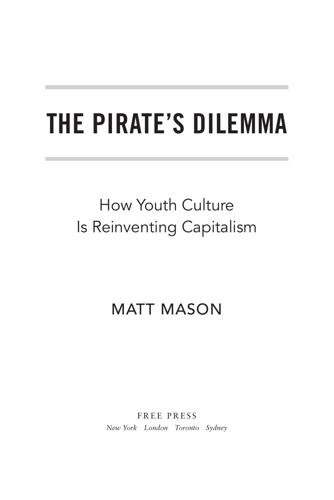
The Pirate's Dilemma: How Youth Culture Is Reinventing Capitalism
by
Matt Mason
In “The Piracy Paradox: Innovation and Intellectual Property in Fashion Design,” Raustiala and Sprigman make the case that the remix stimulates growth in the industry. Because designs are copied quickly and styles diffuse down to the mass market, the original luxury items lose their allure, creating demand for new trends, and this pirate-induced demand drives the entire business forward. Raustiala and Sprigman call this process “induced obsolescence,” arguing that copying in fashion is “paradoxically advantageous for the industry. IP [intellectual property] rules providing for free appropriation of fashion designs accelerate the diffusion of designs and styles… If copying were illegal, the fashion cycle would occur very slowly.”
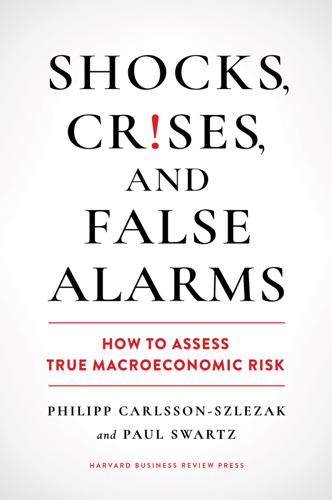
Shocks, Crises, and False Alarms: How to Assess True Macroeconomic Risk
by
Philipp Carlsson-Szlezak
and
Paul Swartz
Published 8 Jul 2024
The forecast is wrong most of the time, and significantly so—even before the postpandemic inflation surge, when price growth was a relatively quiet affair. And when it was right, it was because realized inflation coincided with the 2% inflation target—even a broken clock is right twice a day. The postpandemic inflation surge fits this pattern of unpredictable change. Yes, the fiscal policy–induced demand overshoot was visible and led some to warn against coming inflation in early 2021.1 But was that warning for the right reasons? The supply constraints that unfolded simultaneously were less predictable—both the sustained hiccups in physical supply chains and the convoluted recovery in labor participation that gradually came to light later that year.
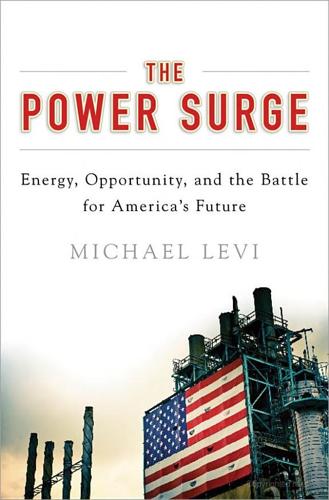
The Power Surge: Energy, Opportunity, and the Battle for America's Future
by
Michael Levi
Published 28 Apr 2013
Qing Su, “A Quantile Regression Analysis of the Rebound Effect: Evidence from the 2009 National Household Transportation Survey in the United States,” Energy Policy 45, pp. 368–377 (2012); Kent M. Hymel, Kenneth 238 • NOTES FOR PAGES 139–141 99. 100. 101. 102. 103. 104. 105. 106. 107. 108. A. Small, and Kurt Van Dender, “Induced Demand and Rebound Effects in Road Transport,” Transportation Research Part B: Methodological 44, no. 10 (2010). Tad W. Patzek, “Thermodynamics of the Corn-Ethanol Biofuel Cycle,” Critical Reviews in Plant Sciences 23, no. 6 (2004); David Pimentel and Tad W. Patzek, “Ethanol Production Using Corn, Switchgrass, and Wood; Biodiesel Production Using Soybean and Sunflower,” Natural Resources Research 14, no. 1 (2005); Yang Yi et al., “Replacing Gasoline with Corn Ethanol Results in Significant Environmental Problem-Shifting,” Environmental Science and Technology 46, no. 7 (2012).

Doctored: The Disillusionment of an American Physician
by
Sandeep Jauhar
Published 18 Aug 2014
These “appropriate-use criteria” (bolstered by “comparative effectiveness research”) are essential for educating physicians and patients alike about medical services that are wasteful and should be avoided. (By employing these criteria, cardiologists have been able—or forced—to decrease their use of imaging by 20 percent.) In fact, better-informed patients might be the most potent restraint on overutilization. A large percentage of health care costs is a consequence of induced demand—that is, physicians persuading patients to consume services they would not have chosen had they been better educated. If patients were more involved in medical decision-making (admittedly not easy to put into practice in the hyperspeed that is contemporary American medicine, and also obviously at odds with regulation-driven P4P care), there would be more constraints on doctors’ behavior, thus decreasing the possibility of unnecessary testing.
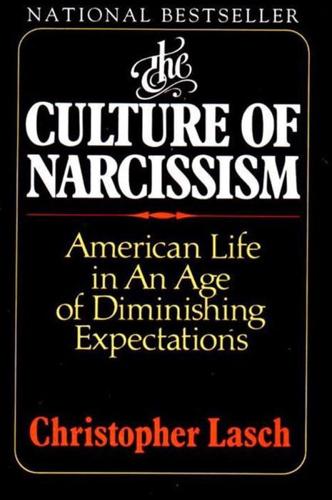
The Culture of Narcissism: American Life in an Age of Diminishing Expectations
by
Christopher Lasch
Published 1 Jan 1978
Having achieved a complete separation of handwork and brain work , management monopolizes technical knowledge Paternalism Without Father : 235 234 : The Culture of Narcissism tion, tries to present the professional as the successor to the capitalist. The ideology of "compassion he says, serves the class in terest of the "post-industrial surplus of functionaries who, in the manner of industrialists who earlier turned to advertising, induce demand for their own products Professional self-aggrandizement however, grew up side by side with the advertising industry and must be seen as another and reduces the worker to a human machine; but the administra- " tion and continual elaboration of this knowledge require an evergrowing managerial apparatus, itself organized on the principles , of the factory with its intricate subdivision of tasks.
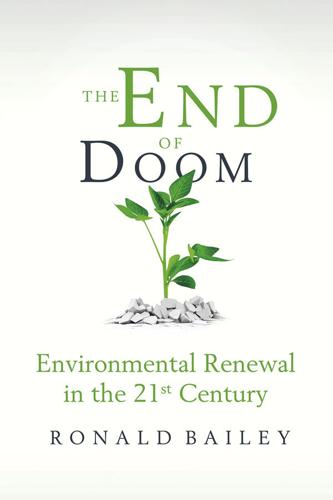
The End of Doom: Environmental Renewal in the Twenty-First Century
by
Ronald Bailey
Published 20 Jul 2015
In addition, Doces cites a 2006 study analyzing the effects on globalization on women in 180 countries that shows “increasing international exchange and communication create new opportunities for income-generating work and expose countries to norms that, in recent decades, have promoted equality for women.”46 As a result, trade-induced demand for human capital expands to include women, further cutting fertility rates in poor countries. This conclusion is further bolstered by a 2005 study by University of Helsinki economists Ulla Lehmijoki and Tapio Palokangas; according to this study, in the short run trade liberalization boosts birth rates, but in the long run it cuts fertility.
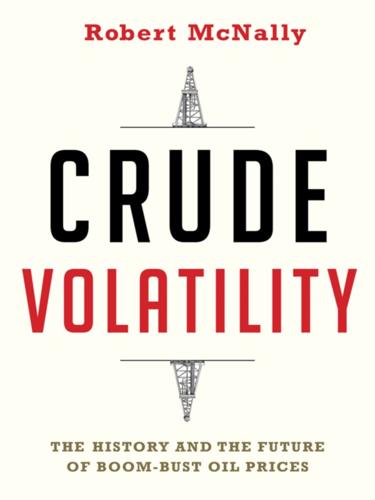
Crude Volatility: The History and the Future of Boom-Bust Oil Prices
by
Robert McNally
Published 17 Jan 2017
It is possible the unmanaged interplay global supply and demand will automatically yield stable prices, but it is more likely future oil trends will resemble those in the past and feature vast shifts, sustained imbalances, upheaval, and surprises. In the short term, oil is likely to range between shut-in costs—well below $30—and prices that induce demand slowdowns if not recessions—well above $100. Price gyrations through this range would destabilize not only our oil industry, but broader economic and financial sectors as well as geopolitics. Investors, officials, and thinkers will need to innovate and implement coping strategies to deal with the mixed blessing of an unmanaged oil market.
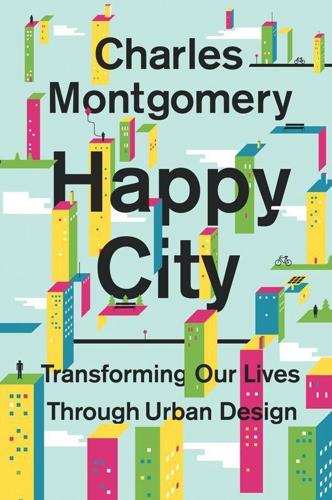
Happy City: Transforming Our Lives Through Urban Design
by
Charles Montgomery
Published 12 Nov 2013
The city’s new metric: “conversation cycling infrastructure,” or routes that are wide enough so that two people can bike side by side and chat, making the commute just a little more like a social visit. All of which raises a curious parallel: just as North American cities created more automobile traffic through decades of road building, Copenhagen has induced demand for other ways of moving, especially cycling, by making streets more complete. Are cities that pursue new means of mobility heading for congestion 2.0? Well, as Anthony Downs pointed out, congestion is an entirely natural feature of any vibrant city. So we should differentiate between types of congestion.
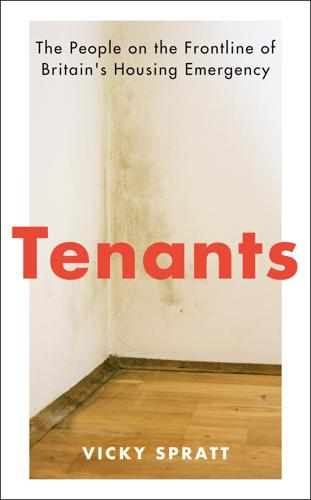
Tenants: The People on the Frontline of Britain's Housing Emergency
by
Vicky Spratt
Published 18 May 2022
One of the town’s leading estate agents, David Plaister Ltd, told the publication that ‘demand was outstripping supply with many properties selling in just a matter of days’, adding that ‘out of every ten properties we sell, between six and eight are to people from Bristol’. This is yet another example of how homeownership and private renting interact, and of how the housing market can shift quickly when an area suddenly becomes desirable and those on low incomes are priced out. But before the coronavirus-induced demand for fresh seaside air, Weston’s high numbers of private renters on low incomes, combined with a lack of social housing, created the perfect conditions for buy-to-let slum landlords to swoop in at the lower end of the market. They knew that they had a captive tenant base and a guaranteed income through Housing Benefit, but that little would be asked of them by their tenants, who had few rights anyway but were probably not aware of those that they did have.
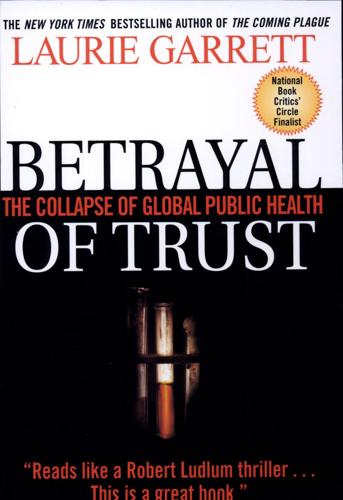
Betrayal of Trust: The Collapse of Global Public Health
by
Laurie Garrett
Published 15 Feb 2000
It was the doctor. And the doctor decided how much to charge for the time he or she spent studying the test results and treating the patient. From the point of view of economists, this was insane. It meant consumers could not behave as consumers, shop around, choose not to buy, or to buy elsewhere. And doctors induced demand. In other words, the supplier manipulated demand.360 After creation of Part B of Medicare, the trend spiraled completely out of control.361 This constituted a market failure because there was no genuine competition and consumers could not “vote with their feet and paychecks,” opting out of treatment.
…
Feldman, R., “Competition among physicians, revisited.” Journal of Health, Politics, Policy and Law 13 (1988): 239–261; McMenamin, P., “A crime storm from Medicare Part B.” Health Affairs (Winter 1988): 94–101; and Rice, T. H., “The impact of changing Medicare reimbursement rates on physician-induced demand.” Medical Care 21 (1983): 803–815. 362. Cooper, B. and Rice, D., The Economic Cost of Illness Revisited. Washington, D.C.: National Center for Health Statistics, U.S. Public Health Service, HEW, 1976. 363. Source: Health Care Financing Administration. 364. Ibid. 365. Dorothy Rice kindly provided me with her data on June 10, 1983, during an interview.
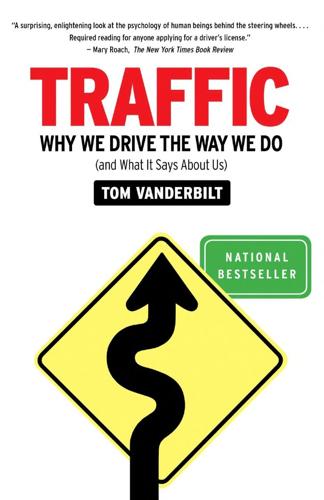
Traffic: Why We Drive the Way We Do (And What It Says About Us)
by
Tom Vanderbilt
Published 28 Jul 2008
A study in California found that a 1 percent increase in lane-miles creates an immediate increase in vehicle-miles traveled of 0. 2 percent. See Mark Hansen and Huang Yuanlin, “Road Supply and Traffic in California Urban Areas,” Transportation Research A, vol. 31 (1997), pp. 205–18. Robert B. Noland, a scientist at Imperial College London, has compiled an extensive bibliography of “induced demand” research; it’s available at http://www.vtpi.org/induced_bib.htm. on the affected roads: See S. Cairns, S. Atkins, and P. Goodwin, “Disappearing Traffic? The Story So Far,” Municipal Engineer, vol. 151, no. 1 (March 2002), pp. 13–22. There was an interesting example of this phenomenon in New York City.

The Rise of the Network Society
by
Manuel Castells
Published 31 Aug 1996
If price elasticities are high, employment losses will be compensated by extra demand from both old and new sectors. 4 Yet the critical matter is the right mix between process innovation and product innovation. If process innovation progresses faster, a decline in employment will occur, all other factors being equal. If product innovation leads the pace, then newly induced demand could result in higher employment. The problem with such elegant economic analyses is always in the assumptions: all other factors are never equal. Boyer himself acknowledges this fact, and then examines the empirical fit of his model, observing, again, a wide range of variation between different industries and countries.